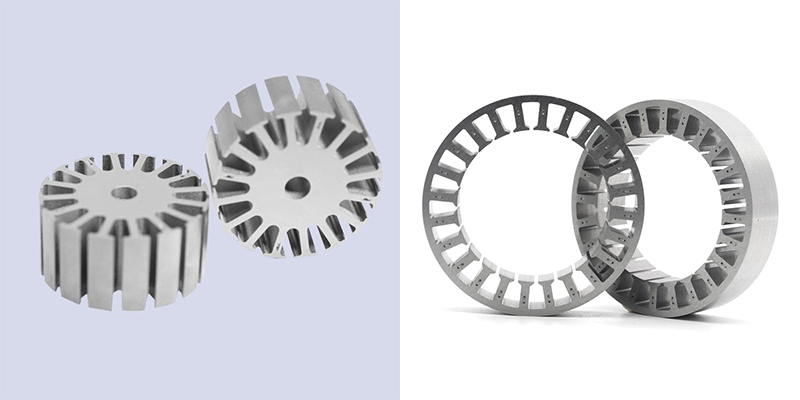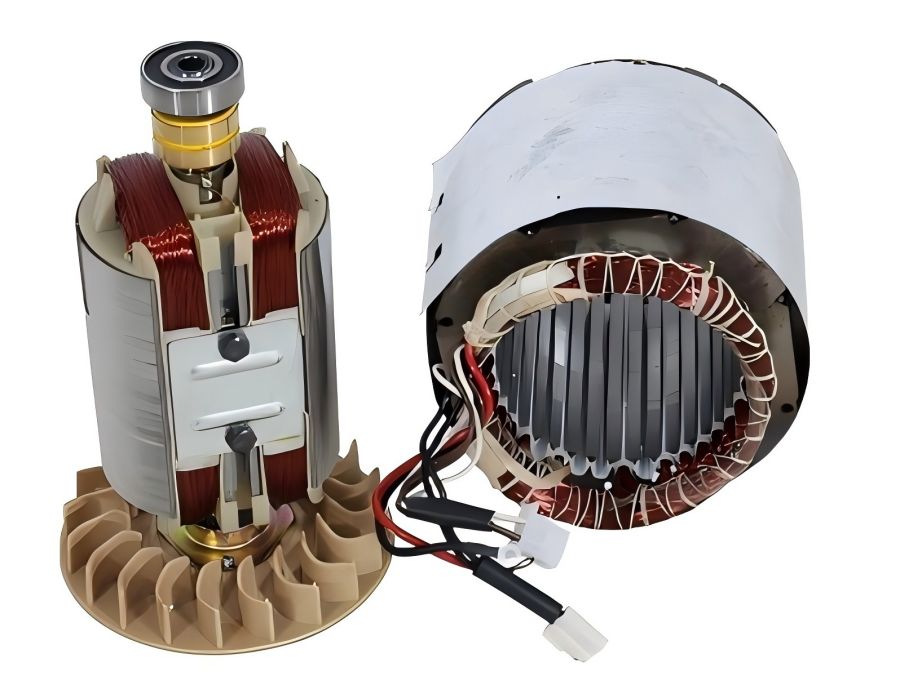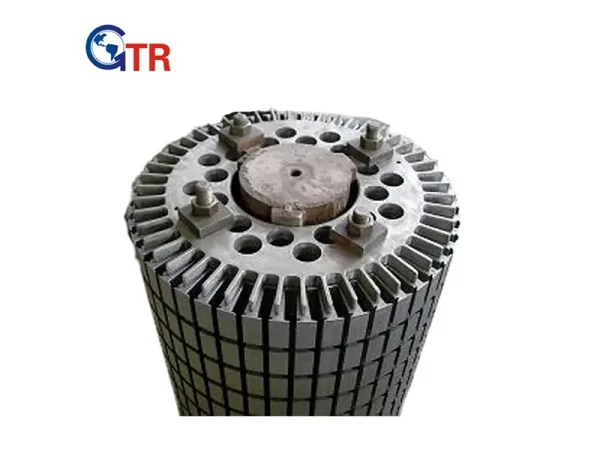DC generators are important for providing direct current (DC) power to various devices, from small electronics to large industries. The stator and rotor are key parts of every DC generator, working together to convert mechanical energy into electrical energy.
This article will examine the stator and rotor’s design, purpose, and significance in DC generators.
The Basic Structure of a DC Generator
In order to produce energy, a DC generator needs a number of essential parts. Among these, the stator and rotor are the most crucial elements.
The stator, also known as the stationary part, is typically composed of a set of electromagnets or permanent magnets. It creates a magnetic field that revolves the rotor. On the other hand, the rotor, often referred to as the armature, is the rotating part that consists of coils of wire wound around a metal core.
The stator’s primary job is to create a steady magnetic field that allows the rotor to revolve; while it does so, electromagnetic induction causes an electrical current to flow through the coils. This process is what enables the DC generator to produce electricity.
The Stator: The Stationary Magnetic Field
The stator of a DC generator is typically made of laminated iron cores to reduce energy losses due to eddy currents. Creating a magnetic field that will interact with the rotor is the stator’s job. This magnetic field is generated either through the use of permanent magnets or an electromagnet, depending on the design of the generator.
In many modern DC generators, the stator uses an electromagnet powered by the current supplied from the rotor. This configuration allows for the control of the magnetic field strength, and consequently, the generator’s output voltage. The stator’s magnetic field is typically stationary, and it provides the necessary flux that the rotor will interact with to produce electricity.
The stator’s role is pivotal because it provides the foundational magnetic environment in which the rotor operates. There wouldn’t be any magnetic field to cause a current to flow through the rotor in the absence of a stator. Essentially, the stator acts as the “source” of the electromagnetic interaction.
The Rotor: The Rotating Core of Energy Conversion
The generator’s revolving component, known as the rotor or armature, is what produces electricity. It is composed of a number of windings or coils that are fixed to a revolving shaft.
As the rotor rotates, the coils travel through the stator-generated magnetic field. Faraday’s law of electromagnetic induction states that the movement of the rotor generates a flow of electric current through the coils.
As the rotor rotates in the magnetic field, the magnetic flux passing through the coils varies. The wire coils’ electrons travel as a result of this flux change, producing an electric current. The polarity of the stator’s magnetic field and the rotor’s rotational direction determine the direction of the induced current.
In a DC generator, the rotor is key to converting mechanical energy into electrical current. A direct current is produced as a result of the rotor’s interaction with the stator’s magnetic field during rotation. The efficiency of the rotor’s design, including the quality of the wire used in the coils and the speed of rotation, directly influences the performance of the DC generator.

The Working Principle: Electromagnetic Induction
The electromagnetic induction concept underlies the functioning of a DC generator. This principle states that an electric current is induced in a conductor, like copper wire, as it passes through a magnetic field. In the case of a DC generator, the conductor is the wire wound around the rotor, and the magnetic field is created by the stator.
When the rotor spins, it moves the wire coils through the magnetic field, inducing an electric current. The current that is generated in the coils is then directed out of the generator through a commutator, a device that ensures the current flows in one direction, thus producing DC power.
DC generators are incredibly efficient in transforming mechanical energy into electrical energy because of this electromagnetic induction mechanism. The rotor and stator work together to harness the power of motion and magnetism to produce a steady flow of direct current.
The Commutator’s Function in a DC Generator
While the stator and rotor are the primary components responsible for generating electricity in a DC generator, the commutator plays a crucial role in ensuring the output is direct current. As the rotor rotates, the commutator, a mechanical switch, flips the current’s direction. This ensures that the current flows in only one direction, allowing the generator to produce DC rather than alternating current (AC).
Periodically reversing the rotor windings’ connection to the external circuit is how the commutator operates. It does this in such a way that the output current is always in the same direction, making it suitable for applications that require a steady DC voltage.
The commutator’s operation is essential for the functioning of a DC generator. Without it, the current induced in the rotor windings would alternate, rendering the generator incapable of providing the steady DC output needed for many applications.
Importance of Stator and Rotor in Power Generation
The collaboration between the stator and rotor is vital to the power generation process in a DC generator. The required magnetic field is produced by the stator, and the rotor rotates inside the field to transform mechanical energy into electrical energy. This interaction is the core principle behind the generation of DC power.
The design and efficiency of both the stator and rotor directly affect the performance of the generator. A well-designed stator and rotor system can produce high-quality electrical power with minimal energy loss. Conversely, poor design or malfunctioning components can lead to inefficient power generation, overheating, or even failure of the generator.
In industrial applications, DC generators are used in a variety of ways, such as providing backup power, operating electric motors, and serving as a power source for scientific experiments. The stator and rotor must work together efficiently to meet the energy demands of these applications.
Innovations in Stator and Rotor Design
Advancements in technology have led to significant improvements in the design of stators and rotors. Modern materials, such as high-quality magnetic steel and advanced winding techniques, have increased the efficiency and durability of both components. Additionally, the development of more compact and lightweight designs has made DC generators more versatile and easier to integrate into various applications.
In recent years, the use of computer modeling and simulation has enabled engineers to optimize the design of the stator and rotor for specific applications. This has led to improvements in the power output, efficiency, and lifespan of DC generators, making them more reliable and cost-effective.
Furthermore, innovations in materials science have allowed for the creation of rotors that can handle higher rotational speeds and stators that can produce stronger magnetic fields. These advancements have made DC generators suitable for more demanding applications, such as those in renewable energy systems, where reliable and efficient power generation is crucial.
Conclusion
In conclusion, the stator and rotor are essential for DC generators, with the stator generating the magnetic field and the rotor converting mechanical energy into electrical energy. Their ongoing design improvements make DC generators more efficient, reliable, and adaptable for modern power needs. As technology advances, further innovations will enhance the role of DC generators in global power systems.







